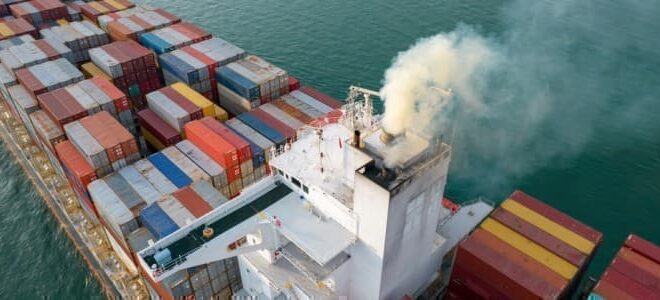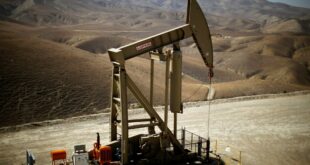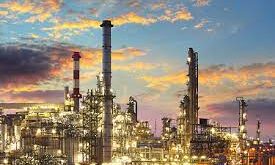The shipping industry and its regulators are drafting tentative pathways to reaching net-zero emissions by 2050. But the emission reduction efforts in the hard-to-decarbonize sector are slowed down by unclear regulation and uncertainty about which cleaner marine fuel would be the most cost-efficient and effective alternative to the oil-derived bunkering fuel that powers nearly all ships today.
Emission Reduction Goals
Last year, the United Nations agency, the International Maritime Organization (IMO), set out in its strategy indicative targets to reduce the total annual GHG emissions from international shipping by at least 20%, striving for 30% by 2030, compared to 2008 levels. These emissions are targeted to decrease by at least 70%, striving for 80% by 2040, compared to 2008. IMO also aims to reach net-zero GHG emissions by or around 2050.
In 2022, international shipping accounted for about 2% of global energy-related CO2 emissions, according to data from the International Energy Agency (IEA).
The IEA said last year that while the emissions reduction targets “are now in line with the goals set out in the Paris Agreement, legally binding measures for the implementation of the revised strategy will be needed to steer the maritime shipping sector onto a trajectory consistent with the Net Zero Emissions by 2050 (NZE) Scenario, which requires an almost 15% reduction in emissions from 2022 to 2030.”
Earlier this month, IMO agreed on an illustration of a possible draft outline of an “IMO net-zero framework” for cutting greenhouse gas emissions from international shipping. The draft lists regulations under the International Convention for the Prevention of Pollution from Ships (MARPOL), which will be adopted or amended to allow for a new global fuel standard and a new global pricing mechanism for maritime GHG emissions.
Many more meetings and discussions will be needed for a draft to be adopted and agreed upon by the regulators and various nations, which appear to be split on a proposal to impose a fee on carbon emissions in the shipping industry. Countries are still seeking to reach a compromise that would be applied globally to avoid regulations on a national level, which would be a headache for everyone involved in shipping.
No Clear Winner in Alternative Fuel Race
Regulation aside, the shipping industry isn’t ready to deploy alternative fuels at a large scale. Part of the problem could be because no clear winner has emerged yet, and methanol, ammonia, biofuels, and LNG are all vying for a prominent role in the sector’s efforts to decarbonize.
Currently, only 1% of the global bulk, container, and tanker fleet are prepared for using these fuels, and fuel availability is low, according to Niels Rasmussen at BIMCO, the world’s largest direct-membership organization for shipowners, charterers, shipbrokers, and agents.
New orders, however, have shown a steady increase in preparedness for alternative fuels, with 5% of ships in the fleet and 55% of ships in the order book readied or prepared for cleaner fuels, Rasmussen wrote in December.
LNG has been the most popular alternative fuel so far, but methanol and ammonia have also been gaining popularity, BIMCO notes.
However, ammonia and methanol could have other market applications, such as co-firing ammonia in coal power plants to reduce emissions in the power-generating sector.
Fuel Uncertainty Makes Industry Reluctant to Splash on New Technology
“The question is where will shipping be in the pecking order of availability of fuels going forward,” Christopher Wiernicki, chairman and CEO of the American Bureau of Shipping, said at the CERAWeek conference in Houston last week, as carried by Reuters.
A universal carbon tax on shipping is coming, Wiernicki told the conference, but noted that a successful energy transition in the sector would need effective regulation under one global regulatory framework.
“Commercial gravity alone will not get us to Net Zero by 2050. We will need ambitious measures, both carrot and stick,” Wiernicki said.
Regulation is important, but so is which fuels could be the most efficient,
ABS’s chief executive added.
“The next 10 years will determine what is desirable vs what is doable.” he said.
“It is way too early to declare fuel winners.”
“Pace and speed will be driven by the boundary conditions of safety, fuel availability and scalability of infrastructure and, more specifically, by the cost of the electrolyzer and the cost of the carbon capture,” Wiernicki said during his appearance at CERAWeek.
According to the executive, the industry should now recognize that any sector would have alternative blue fuels – produced from fossil fuels with carbon capture – as an intermediate step from oil to green fuels.
“Last year the conversations were focused on going from oil to a green fuel economy. Today, we are seeing the emergence of the blue economy that addresses carbon management, carbon capture, carbon pricing and carbon credits and offsets, as an essential stepping-stone,” Wiernicki noted.
But ship owners are reluctant to splash money on one particular fuel amid uncertainty around which fuels would eventually emerge as winners to help decarbonize the shipping industry.
Costs are huge, especially if spread across various new technologies and fuels.
Shipping companies see costs rising because they feel they have to hedge their bets and invest in several potentially winning options, Seonghoon Woo, founding CEO of Amogy, a company that builds zero-emission ammonia-fueled power systems, said at CERAWeek.

 Iran Energy News Oil, Gas, Petrochemical and Energy Field Specialized Channel
Iran Energy News Oil, Gas, Petrochemical and Energy Field Specialized Channel



